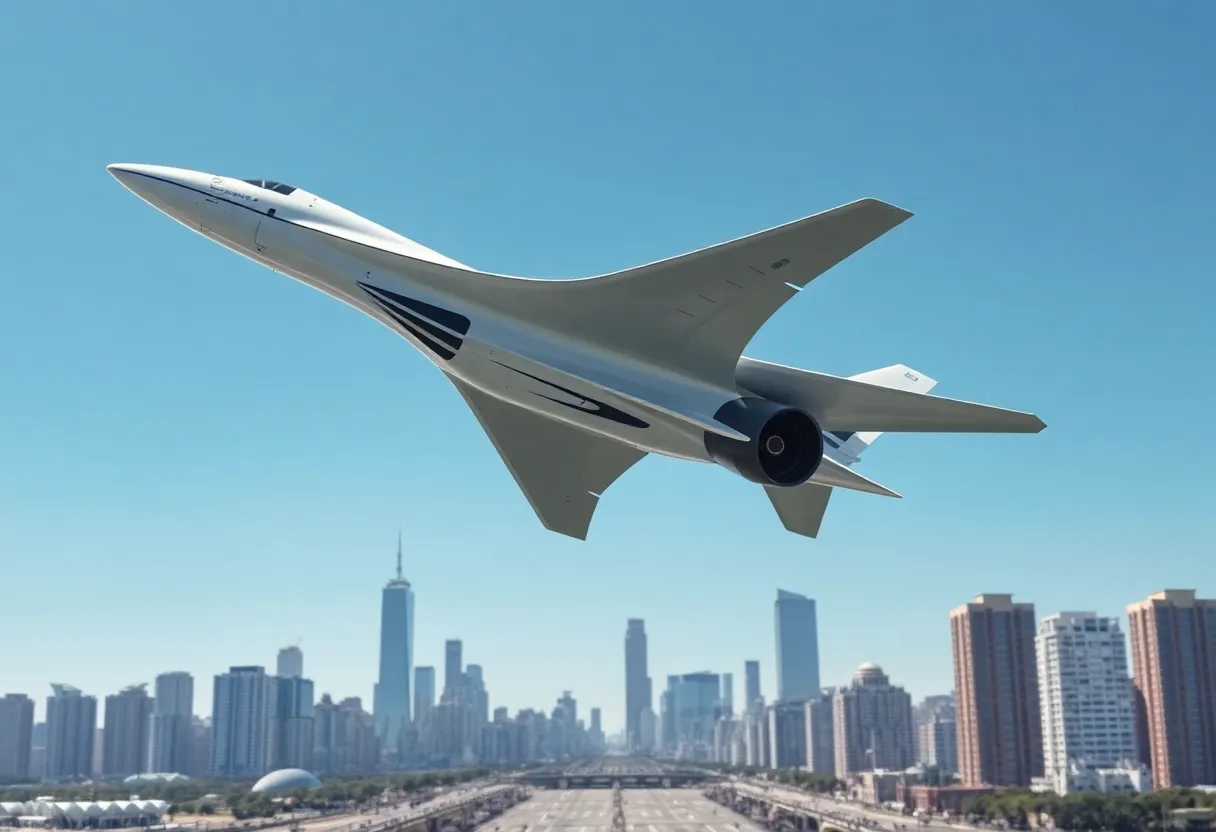News Summary
President Trump has lifted a 52-year ban on overland supersonic flights, allowing high-speed aircraft to operate once again. This decision aims to enhance U.S. competitiveness in aviation technology and includes steps to minimize noise pollution associated with sonic booms. Innovations such as NASA’s low-boom supersonic jet and legislative support from Congress are paving the way for a new era in commercial air travel. The FAA is set to develop new regulations to ensure safety and viability in this exciting development, with commercial flights anticipated by the 2030s.
Exciting News: Supersonic Flights Are Back!
The world of air travel is set for a thrilling transformation as President Trump has signed a series of executive orders that will allow **overland supersonic flights** to take to the skies once more. This marks the end of a **52-year ban** that was put into place back in 1973, primarily due to concerns regarding noise pollution. The official announcement was made on June 6, 2025, and it’s already stirring up conversations across the aviation industry!
Aiming for High Speed and High Standards
With these new executive orders, the U.S. is positioning itself as a leader in **high-speed aviation**. This move aims to remove regulatory barriers that have held back the development of supersonic flight, bringing innovation back to the forefront of commercial travel. The Federal Aviation Administration (FAA) has been instructed to create new standards to help ensure that these **supersonic aircraft** meet noise certification requirements while considering community concerns, economic viability, and technology feasibility.
The Origin of the Ban
To give a little background, the ban on overland supersonic flights was largely due to complaints from the public about the disruptive noise caused by these jets. When they first hit the scene in the late 20th century, the loud sonic booms made them quite unpopular among those on the ground. However, advancements in technology have opened the door for a fresh look at supersonic travel that promises to be less disruptive.
Innovation on the Horizon
NASA is already making strides with its **low-boom supersonic jet,** the X-59, which is gearing up for its first test flight. This innovative aircraft aims to minimize the sound impact of supersonic travel significantly. Then there’s Boom Supersonic, a company on a mission to design quiet supersonic planes that won’t disturb folks below as they zip through the skies at incredible speeds.
Congressional Support and Future Prospects
The repeal of this long-standing ban is further supported by new legislation in Congress aimed at facilitating the operation of **sonic boom-free** flights. The momentum is strong, as the aerospace industry anticipates this evolution will pave the way for a resurgence in supersonic travel and potentially cut flight times between major cities in half. For instance, the journey between **New York and Los Angeles** could be significantly quicker than it is today.
Boosting U.S. Competitiveness and Safety
Leaders in the aerospace sector are optimistic about these developments. Boom Supersonic’s CEO expressed gratitude for the steps taken to make **commercial supersonic travel** a reality once again. It’s not just about speed; it’s about putting the U.S. back on the map as a frontrunner in aviation technology.
Preparing for the Future
The FAA’s new regulations are designed to stimulate further **research and development,** gearing up for the expected launch of commercial supersonic flights by the **2030s.** These changes are part of a broader agenda aimed at **deregulating** the aviation industry, allowing for more innovation and flexibility, which also includes advancements in **domestic drone operations.**
Safety Measures in Place
Additionally, with the approach of high-profile events such as the **2028 Summer Olympics in Los Angeles,** measures are being put into place to enhance U.S. defenses against unauthorized drone threats, ensuring that the skies remain safe and secure. The goal is to harness modern engineering to make contemporary supersonic travel not only viable but also **safe and sustainable.**
As we look ahead, the skies may soon be filled with the sound of furious engines and swift travel, bringing a new era to the world of commercial aviation. Exciting times are on the horizon, and everyone is watching closely as this new chapter unfolds!
Deeper Dive: News & Info About This Topic

Author: STAFF HERE FLORENCE WRITER
FLORENCE STAFF WRITER The FLORENCE STAFF WRITER represents the experienced team at HEREFlorence.com, your go-to source for actionable local news and information in Florence, Florence County, and beyond. Specializing in "news you can use," we cover essential topics like product reviews for personal and business needs, local business directories, politics, real estate trends, neighborhood insights, and state news affecting the area—with deep expertise drawn from years of dedicated reporting and strong community input, including local press releases and business updates. We deliver top reporting on high-value events such as the Florence Festival of Lights, Pee Dee Pride, and agricultural expos at the Florence Center. Our coverage extends to key organizations like the Florence Regional Chamber of Commerce and the Pee Dee Area Council of Governments, plus leading businesses in healthcare and retail that power the local economy such as McLeod Health and Pee Dee Electric Cooperative. As part of the broader HERE network, including HERECharleston.com, HEREColumbia.com, HEREGreenville.com, and HEREHiltonHead.com, we provide comprehensive, credible insights into South Carolina's dynamic landscape.





